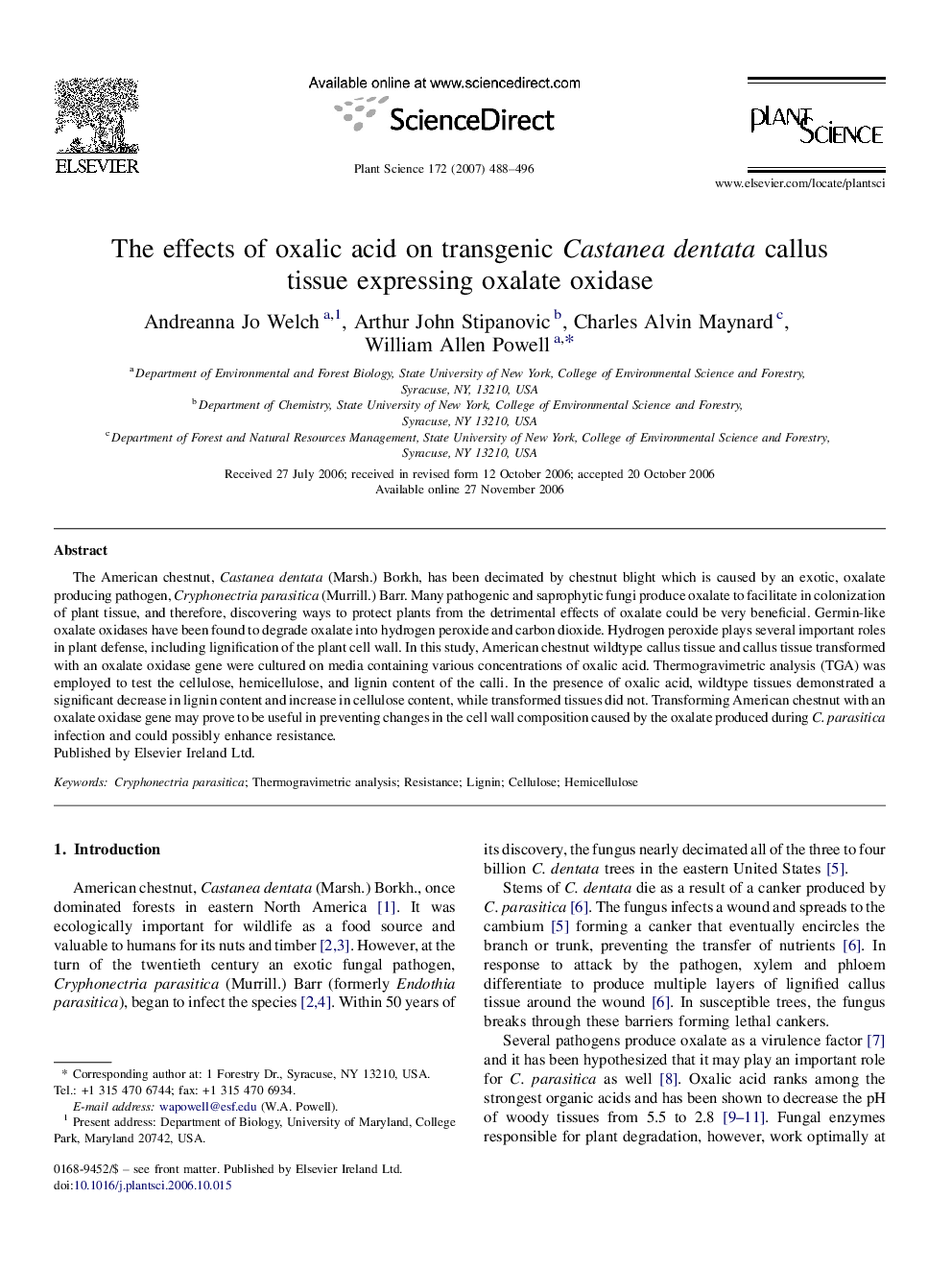| Article ID | Journal | Published Year | Pages | File Type |
|---|---|---|---|---|
| 2018259 | Plant Science | 2007 | 9 Pages |
The American chestnut, Castanea dentata (Marsh.) Borkh, has been decimated by chestnut blight which is caused by an exotic, oxalate producing pathogen, Cryphonectria parasitica (Murrill.) Barr. Many pathogenic and saprophytic fungi produce oxalate to facilitate in colonization of plant tissue, and therefore, discovering ways to protect plants from the detrimental effects of oxalate could be very beneficial. Germin-like oxalate oxidases have been found to degrade oxalate into hydrogen peroxide and carbon dioxide. Hydrogen peroxide plays several important roles in plant defense, including lignification of the plant cell wall. In this study, American chestnut wildtype callus tissue and callus tissue transformed with an oxalate oxidase gene were cultured on media containing various concentrations of oxalic acid. Thermogravimetric analysis (TGA) was employed to test the cellulose, hemicellulose, and lignin content of the calli. In the presence of oxalic acid, wildtype tissues demonstrated a significant decrease in lignin content and increase in cellulose content, while transformed tissues did not. Transforming American chestnut with an oxalate oxidase gene may prove to be useful in preventing changes in the cell wall composition caused by the oxalate produced during C. parasitica infection and could possibly enhance resistance.
